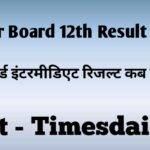Candlestick patterns are graphical representations of price movements on a stock chart. They are formed by the price action of a security over a given period of time and are used by traders to identify potential buying and selling opportunities. Here is a list of the top 20 candlestick patterns that are commonly used in the stock market:
- Bullish Engulfing Pattern: This pattern occurs when a small black candlestick is followed by a large white candlestick that completely “engulfs” the previous day’s candlestick. It suggests a bullish reversal and is a sign that buyers are taking control of the market.
- Bearish Engulfing Pattern: This pattern is the opposite of the Bullish Engulfing Pattern and occurs when a small white candlestick is followed by a large black candlestick that completely “engulfs” the previous day’s candlestick. It suggests a bearish reversal and is a sign that sellers are taking control of the market.
- Bullish Hammer: This pattern is formed when the open, low, and close are nearly equal, and there is a long lower shadow. It suggests that the market has reached a support level and that the bulls are taking control.
- Bearish Hammer: This pattern is the opposite of the Bullish Hammer and is formed when the open, high, and close are nearly equal, and there is a long upper shadow. It suggests that the market has reached a resistance level and that the bears are taking control.
- Bullish Marubozu: This pattern is formed when the open and close are at the high of the day and there is no upper shadow. It suggests a strong bullish trend.
- Bearish Marubozu: This pattern is the opposite of the Bullish Marubozu and is formed when the open and close are at the low of the day and there is no lower shadow. It suggests a strong bearish trend.
- Bullish Doji: This pattern is formed when the open and close are nearly equal, and there is a small body with long upper and lower shadows. It suggests indecision in the market and can be a sign of a potential trend reversal.
- Bearish Doji: This pattern is the opposite of the Bullish Doji and is formed when the open and close are nearly equal, and there is a small body with long upper and lower shadows. It also suggests indecision in the market and can be a sign of a potential trend reversal.
- Bullish Spinning Top: This pattern is formed when the open, high, and close are all close together, and there is a small upper and lower shadow. It suggests indecision in the market and can be a sign of a potential trend reversal.
- Bearish Spinning Top: This pattern is the opposite of the Bullish Spinning Top and is formed when the open, low, and close are all close together, and there is a small upper and lower shadow. It also suggests indecision in the market and can be a sign of a potential trend reversal.





